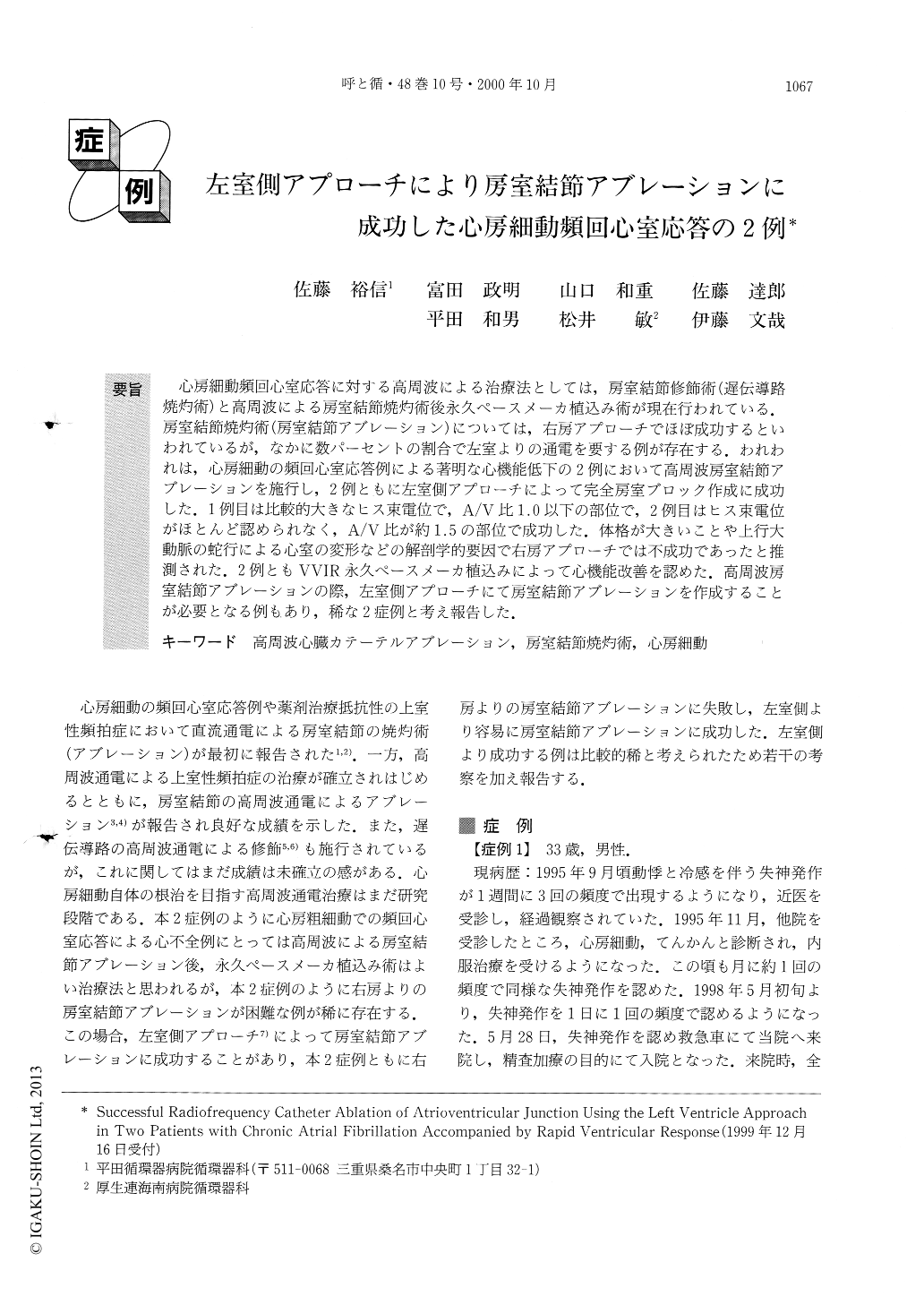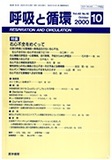Japanese
English
- 有料閲覧
- Abstract 文献概要
- 1ページ目 Look Inside
心房細動頻回心室応答に対する高周波による治療法としては,房室結節修飾術(遅伝導路焼灼術)と高周波による房室結節焼灼術後永久ペースメーカ植込み術が現在行われている.房室結節焼灼術(房室結節アブレーション)については,右房アプローチでほぼ成功するといわれているが,なかに数パーセントの割合で左室よりの通電を要する例が存在する.われわれは,心房細動の頻回心室応答例による著明な心機能低下の2例において高周波房室結節アブレーションを施行し,2例ともに左室側アプローチによって完全房室ブロック作成に成功した.1例目は比較的大きなヒス東電位で,A/V比1.0以下の部位で,2例目はヒス東電位がほとんど認められなく,A/V比が約1.5の部位で成功した.体格が大きいことや上行大動脈の蛇行による心室の変形などの解剖学的要因で右房アプローチでは不成功であったと推測された.2例ともVVIR永久ペースメーカ植込みによって心機能改善を認めた.高周波房室結節アブレーションの際,左室側アプローチにて房室結節アブレーションを作成することが必要となる例もあり,稀な2症例と考え報告した.
In the therapy for atrial fibrillation with rapidventricular response, radiofrequency catheter modifi-cation of the slow pathway and atrioventricular nodeablation with pace maker implantation are now availa-ble. Atrioventricular node (AVN) ablation can be succe-ssfully carried out in almost all cases from the rightatrial approach. However, in some cases, AVN ablationcan be performed only from the left side approach. Wesuccessfully ablated AVN by approach from the leftside in two cases with congestive heart failure due toatrial fibrillation with rapid ventricular response. In thefirst case, the electrical potential of the ablation siteshowed large His deflection with A/V ratio below 1.0. Inthe second case, the electrical potential of the ablationsite showed almost no His deflection with A/V ratio1.5. In these two cases, the AV node might exist deep inthe interventricular septum, but by these procedures thepatients got well. We reported some relatively rarecases treated by AVN ablation using the left sideapproach.

Copyright © 2000, Igaku-Shoin Ltd. All rights reserved.


